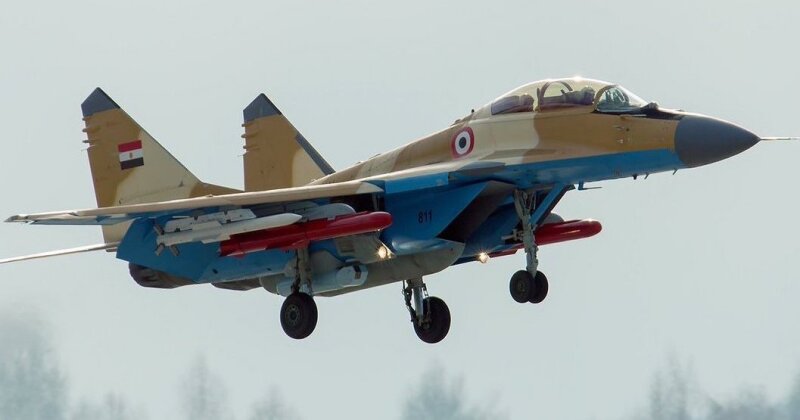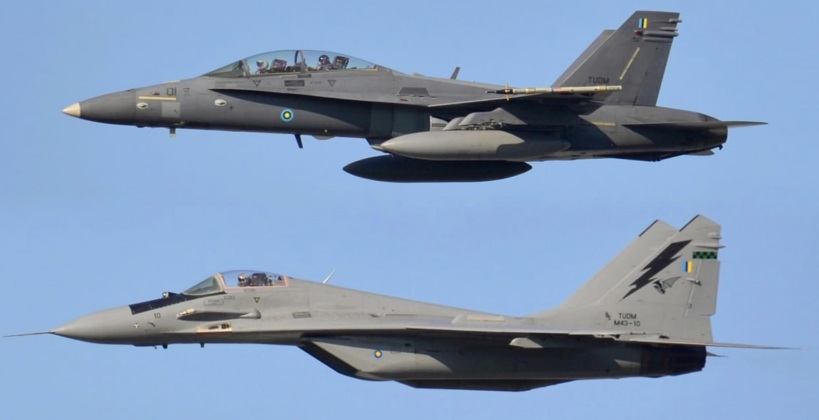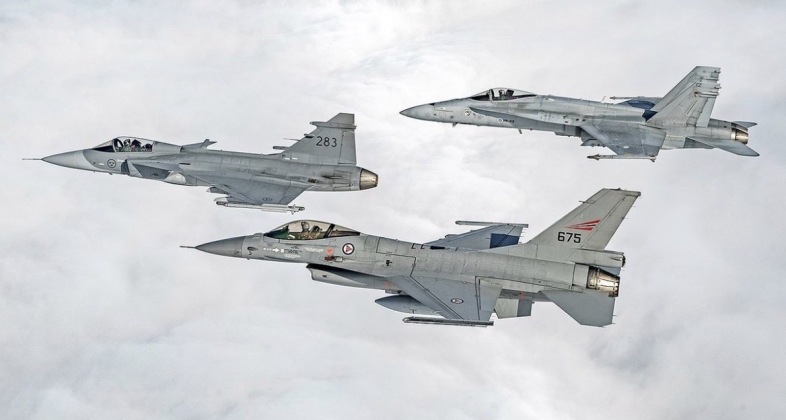News
Top Four Fighters Which Could Revolutionise Ukraine’s Air Force: Assessing Strengths and Drawbacks of Each
As the United States and its Western allies sustain their massive material support for the Ukrainian Military, which since the outbreak of the Russian-Ukrainian War in February has amounted to tens of billions of dollars worth of equipment, the possibility of equipping Ukraine with modern combat aircraft has increasingly be raised. A training program for Ukrainian personnel which would allow them country’s air force to more quickly integrate American F-16 fighters in future was confirmed to in July, while in August details were revealed regarding a secretive effort to train pilots to operate American A-10 ground attack jets. In early November the prominent British security think tank the Royal United Services Institute assessed that the Swedish Gripen lightweight fighter could be the most suitable candidate to equip the Ukrainian Air Force. Other possibilities, such as heavyweight F-15 fighters and even Soviet built MiG-29s, have also been raised. An evaluation of four of the leading potential candidates to form the next generation of the Ukrainian fighter fleet is given below.

MiG-29/MiG-29M
The MiG-29 fourth generation medium weight fighter has formed the backbone of the Ukrainian fighter fleet since the outbreak of war in February. The Soviet built jets are highly prized for their low maintenance needs and their ability to operate from short makeshift runways, and have extreme levels of manoeuvrability making them ideal for short range air defence duties. This has made the MiGs a more valued asset than higher end heavyweight Su-27 and Su-24 aircraft which need considerable more maintenance to operate, and which are not operated by allied states meaning spare parts cannot be easily procured. An issue with the MiG-29, however, as with all current Ukrainian fighters, is their obsolete weaponry and avionics which leaves them in a poor position to seriously threaten Russia’s far more modern force in the air. Their use of mechanically scanned radars and semi active rather than active radar guided air to air missiles are a particular hindrance. This would also be an issue should MiG-29s be delivered from NATO states such as Poland and Slovakia, which received the aircraft in the 1980s when formerly part of the Soviet-led Warsaw Pact.

Perhaps Ukraine’s best option, which was raised by Western analysts as early as April, was that Western countries press Egypt to sell its fleet of 46 MiG-29M fighters to Ukraine. The MiG-29M is the most capable variant of the MiG-29 anywhere in the world, with those in Egyptian service equipped with modern R-77-1 air to air missiles and Kh-35 cruise missiles among other sophisticated armaments, as well as electronically scanned array radars. The MiGs are better equipped than most fighters in the Russian Air Force itself, and inherit the low maintenance needs and suitability for austere airfield operations of the original MiG-29 while being relatively easy for existing Ukrainian units to convert to. The fighters also avoid the risks that come from allowing Russia to study the capabilities of NATO aircraft since they are Russian made. They are also far less costly than Western aircraft equipped with similarly advanced radars and weapons. The MiG-29M is likely the ideal option for the Ukrainian Air Force, although it remains unlikely that Egypt would agree to supply them despite Western pressure. Although the Egyptian government of Anwar Al Sadat in the 1970s illegally supplied top end Soviet fighters to the United States, the current administration has taken a far more neutral position in the conflict between Russia and the West and is unlikely to assets to a move that would devastate its emerging security partnership with Moscow.

F-16
The F-16 is the most widely used fighter of the fourth generation, with over 550 forming the backbone of the U.S. Air Force and a small number of naval aviation units, and was developed during the Cold War as a low cost and low maintenance asset to serve as a lighter counterpart to the high end F-15 Eagle. The very large surpluses of several hundred F-16s in the United States has led the class to be raised as a leading candidate to equip Ukraine’s air force, although questions remain regarding the viability of such an arms transfer. Current F-16s in storage and the large majority of those in service in NATO use obsolete mechanically scanned array radars, which are far more prone to jamming and which the Soviet tactical combat fleet began to move away from as early as 1981. Unmodernised F-16s also lack high off boresight targeting capabilities providing by the new AIM-9X air to air missile and helmet mounted sights, leaving them at an overwhelming disadvantage against modern Russian fighters – or even Ukraine’s current MiG-29s and Su-27s which were among the first fighter classes in the world with such capabilities. As a result, should the F-16 be made viable for war in Ukraine, significant investments would need to be made to either built new units, which cost significantly more than any Russian fighter class, or modernising old airframes to the ‘F-16V’ standard with up to date avionics and weaponry. Supplying modernised F-16s nevertheless presents its own risks, including discrediting the class in the eyes of export clients should they take heavy losses, and the compromising of sensitive technologies by providing Russian forces with the opportunity to study the aircraft in action. The F-16 is also far less well suited to austere airfield operations than the MiG-29.

F-18/F-18E
The medium weight F-18 Hornet and F-18E/F Super Hornet have been raised repeatedly as candidates to form Ukraine’s new generation of fighters. The aircraft require more maintenance than F-16s, but are considered low maintenance relative to their sizes. Although Hornets and Super Hornets have a number of performance advantages over F-16s, including significantly higher endurances and engine redundancy, they are not considered as cost effective and will likely be less well suited to the requirements of the Ukrainian theatre. The aircraft are significantly more costly, have fewer numbers from reserve units available, and are far slower and less manoeuvrable than the F-16 – let alone the MiG-29 – leaving their suitability to counter the Russian Air Force in question.

Gripen
The Swedish Gripen fighter comes from a category of very light aircraft smaller even than the F-16, and comparable to the Sino-Pakistani JF-17 or the Indian Tejas. The aircraft is prized for its very low operational costs and maintenance needs, with little ground support equipment required and a design optimised for operations from dispersed bases. The Gripen was thus designed for a mode of operation similar to the MiG-29, albeit with approximately half the engine thrust and a very modest flight performance where the MiG remains among the world’s most manoeuvrable jets. Among Western fighter classes the Gripen is the best suited to austere airfield operations with the exception of the new F-35B – which was designed for the U.S. Marine Corps and is currently the most expensive production fighter in the world. The Gripen is far better suited than other Western fighter classes to being adopted to Ukraine’s current mode of operations, which combined with its low cost makes it potentially ideal. Availability of the fighter, however, remains a serious issue, with under 300 having been built in more than 30 years since its first flight and no country fielding large reserves as the U.S. does for the F-16 and F-18.
The majority of Gripen operators have taken neutral positions in the ongoing war, with only Sweden itself as well as the Czech Republic having strongly sided with Kiev – as well as Britain which operates a small number of trainer variants. Like the F-16, the large majority of Gripens use obsolete avionics and mechanically scanned radars, while the modern Gripen E/F variant has been produced in very limited numbers. With the Gripen having fared very poorly on export markets in recently years, seeing no sales at all since 2014, the possibility of Gripens and particularly the Gripen E/F taking heavy losses in combat with the Russian Air Force could further seriously diminish the aircraft’s appeal and lead to hesitancy in Sweden to supply Kiev.












